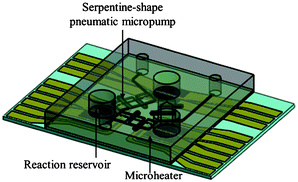Nucleic acid amplification using microfluidic systems
Abstract
In the post-human-genome-project era, the development of molecular diagnostic techniques has advanced the frontiers of biomedical research. Nucleic-acid-based technology (NAT) plays an especially important role in molecular diagnosis. However, most research and clinical protocols still rely on the manual analysis of individual samples by skilled technicians which is a time-consuming and labor-intensive process. Recently, with advances in microfluidic designs, integrated micro total-analysis-systems have emerged to overcome the limitations of traditional detection assays. These microfluidic systems have the capability to rapidly perform experiments in parallel and with a high-throughput which allows a NAT analysis to be completed in a few hours or even a few minutes. These features have a significant beneficial influence on many aspects of traditional biological or biochemical research and this new technology is promising for improving molecular diagnosis. Thus, in the foreseeable future, microfluidic systems developed for molecular diagnosis using NAT will become an important tool in clinical diagnosis. One of the critical issues for NAT is nucleic acid amplification. In this review article, recent advances in nucleic acid amplification techniques using microfluidic systems will be reviewed. Different approaches for fast amplification of nucleic acids for molecular diagnosis will be highlighted.


 Please wait while we load your content...
Please wait while we load your content...